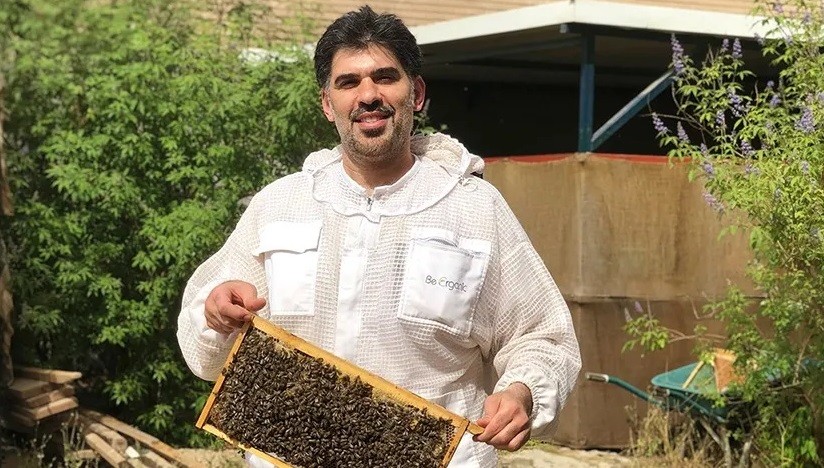23/01/2024
23/01/2024

KUWAIT CITY, Jan 23: In the heart of Kuwait's challenging climate, where deserts dominate and greenery is sparse, a hidden world thrives – the world of bee honey. Despite its limited production, Kuwaiti honey, especially the renowned "Sidr" variety, holds international acclaim, achieving top honors in prestigious competitions worldwide. To shed light on this fascinating realm, Al-Anbaa met with beekeeper and dentist Dr. Issa Al-Issa, a passionate advocate for high-quality, additive-free honey.
Dr. Al-Issa revealed that Kuwait boasts approximately 30 to 50 thousand beehives during a season, producing around 150 thousand kilograms of Sidr honey. Emphasizing a commitment to quality over quantity, he follows a philosophy of "directly from the hive to the table," avoiding additives or adulteration in the honey.
Highlighting the challenges faced by Kuwaiti beekeepers, Dr. Al-Issa discussed the high cost of importing bees and the significant loss of bees each season, reaching around 90%. The dwindling interest in gardens, both private and public, exacerbates the scarcity of nectar sources, impacting honey production. One hive, which previously yielded 10 to 15 kilograms of honey, now produces only 2 to 3 kilograms.
In Kuwait, two main types of honey prevail – Kuwaiti Sidr honey and spring flower honey. Dr. Al-Issa emphasized that "Sidr" honey stands out as the most famous, with two harvesting seasons: November for Sidr honey, considered the best, and June for spring flower honey.
Discussing bee breeds suitable for Kuwait's climate, Dr. Al-Issa outlined efforts to import adaptable and high-quality bees. He introduced the "Carnioli," a hybrid type imported from Egypt, known for its resilience to harsh conditions. While addressing local breeds like the "dwarf bees," he emphasized the challenges in controlling and utilizing them for honey production due to their difficulty and lower honey quality.
The article delved into the challenges facing beekeepers, including Kuwait's harsh climate and limited greenery. Dr. Al-Issa called upon authorities, such as the Public Authority for Agriculture Affairs and Fish Resources, the Ministry of Education, and the Ministry of Endowments, to contribute to increasing green areas. He underscored the potential of beekeeping as a future wealth, urging the focus on greening efforts, particularly with "honeycomb" trees.
Dr. Al-Issa shared a personal journey into beekeeping, driven by a family member's health condition. Inspired by the healing properties of honey mentioned in the Quran, he embarked on a mission to produce pure local honey. The success in controlling the disease reinforced his belief in the medicinal benefits of honey, fueling his passion for its promotion.
Lastly, Dr. Al-Issa offered insights into identifying good honey, emphasizing laboratory examination as the most accurate method. He provided four practical ways for consumers to recognize authentic honey, including observing bubbles, transparency, the presence of impurities like pollen grains, and the natural crystallization of honey. In conclusion, he advocated for honey enthusiasts to opt for varieties containing wax, as a sign of natural and unadulterated production.


